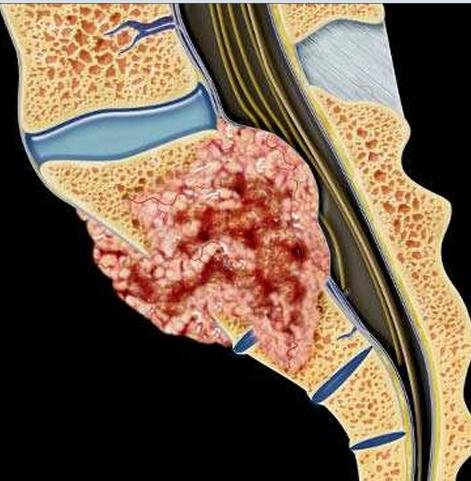Ependymoma
Ependymoma
Pediatric spinal ependymoma is a rare, slow-growing tumor that arises from ependymal cells lining the central canal of the spinal cord. Though ependymomas are more common in the brain, they can also occur in the spinal cord, especially in the cervical and thoracic regions. Despite being considered a benign or low-grade tumor, its location within the spinal cord makes it clinically significant and potentially dangerous due to its risk of compressing vital spinal structures. In Bangladesh, timely diagnosis and effective management of spinal ependymomas in children can be challenging due to limited awareness, late referrals, and inadequate pediatric neurosurgical services in many regions. Dr. Md. Nafaur Rahman, one of Bangladesh’s leading pediatric neurosurgeons, brings world-class expertise in the diagnosis, surgical removal, and long-term care of children with spinal cord tumors, including ependymomas. What is a Spinal Ependymoma? A spinal ependymoma is a tumor that arises from the ependymal lining of the spinal cord's central canal. These tumors are typically: Intramedullary – occurring within the spinal cord tissue itself Well-circumscribed – often encapsulated, making surgical removal possible Slow-growing, though they can cause serious symptoms due to spinal cord compression Found in children and adolescents, often between ages 5 and 18 Types of Ependymomas Myxopapillary ependymoma – often found in the lower spinal cord or filum terminale Classic ependymoma (Grade II) – most common in children Anaplastic ependymoma (Grade III) – more aggressive and rare in children Causes and Risk Factors Mostly sporadic, with no clear genetic cause in most cases Rarely associated with neurofibromatosis type 2 (NF2) Radiation exposure is a possible risk factor but uncommon in children Not caused by trauma or infection Clinical Symptoms in Children The presentation of a spinal ependymoma in a child can vary depending on the tumor’s location, size, and rate of growth. Symptoms often include: Chronic back or neck pain Radiating pain in the limbs Muscle weakness, especially in the legs Unsteady gait or frequent falls Loss of bladder or bowel control Numbness or tingling in arms or legs Spinal deformities like scoliosis in long-standing cases In Bangladesh, these symptoms may be misdiagnosed as polio, spinal tuberculosis, or general developmental delay, leading to delayed diagnosis and progression of neurological damage. Diagnosis of Spinal Ependymoma in Bangladesh Early and accurate diagnosis requires a high index of suspicion and access to quality imaging and pathology services. Clinical Evaluation Neurological examination to assess sensory and motor deficits Evaluation of reflexes and spinal tenderness Postural and gait analysis Imaging Studies MRI of the spine with contrast – gold standard for identifying tumor location, size, and spinal cord involvement Whole spine MRI – to check for tumor spread CT scan – to evaluate bony erosion or deformity Histopathology and Immunohistochemistry – confirmation of tumor type and grade following biopsy or surgery Surgical Management by Dr. Nafaur Rahman Surgery is the mainstay of treatment for pediatric spinal ependymomas. The goals are to: Remove the tumor completely Preserve spinal cord function Prevent recurrence Maintain spinal stability Surgical Techniques Microsurgical excision using high-powered operative microscope Intraoperative neuro-monitoring to protect nerve function during tumor removal Spinal reconstruction or stabilization if structural support is compromised Minimally invasive spine surgery in selected cases Dr. Nafaur Rahman’s surgical team operates at both NINS and the Bangladesh Paediatric Neurocare Centre, using cutting-edge neurosurgical techniques tailored for pediatric patients. Postoperative Management Physical rehabilitation and physiotherapy Bladder and bowel training if needed Adjuvant therapy such as radiotherapy in cases of incomplete resection or anaplastic ependymoma Regular follow-up MRI to monitor for recurrence Prognosis and Outcomes Favorable outcome with gross total tumor resection Lower recurrence rate in completely excised, low-grade tumors Improved quality of life with early diagnosis and specialized rehabilitation Children can return to normal schooling and activities Challenges in Bangladesh Limited MRI availability in many regions Delayed referral to pediatric neurosurgery Misdiagnosis as spinal TB or trauma Lack of awareness among parents and primary healthcare providers Financial hardship impacting follow-up and rehabilitation Why Choose Dr. Md. Nafaur Rahman? Bangladesh’s leading expert in pediatric spinal tumor surgery Assistant Professor at NINS, the top neurosurgery hospital in Bangladesh Chief Consultant at Bangladesh Paediatric Neurocare Centre (BPNC) Known for precision microsurgery, ethical care, and compassionate communication Treats children from all over Bangladesh, offering both public and private options Committed to raising awareness and reducing surgical delays Appointment and Contact Dr. Md. Nafaur Rahman Assistant Professor, Pediatric Neurosurgery National Institute of Neurosciences & Hospital (NINS) Chief Consultant, Bangladesh Paediatric Neurocare Centre 📞 For Appointment/Serial: 📱 01912988182 | 01607033535 🌐 Website: www.neurosurgeonnafaur.com










